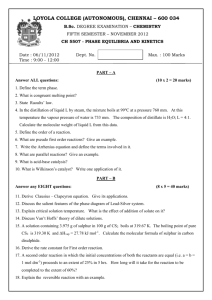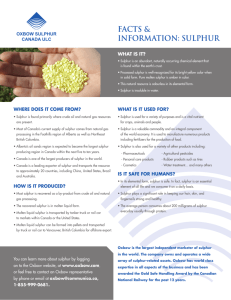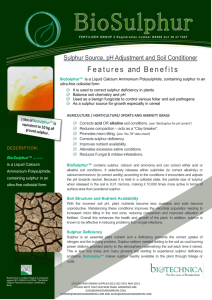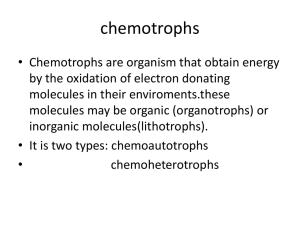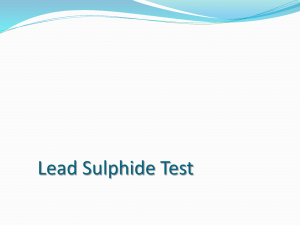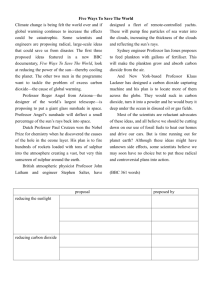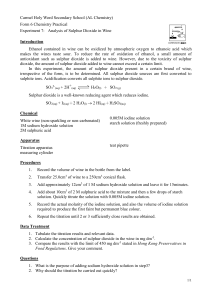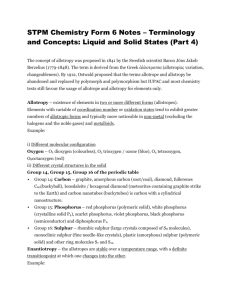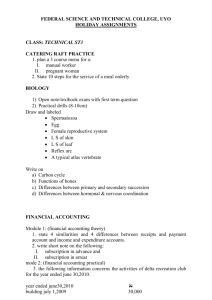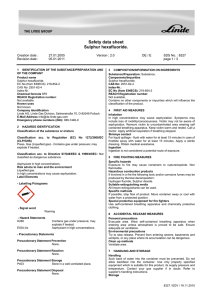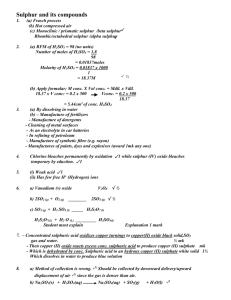The development of a 50m thick organic rich (oil shale) sequence, in
advertisement
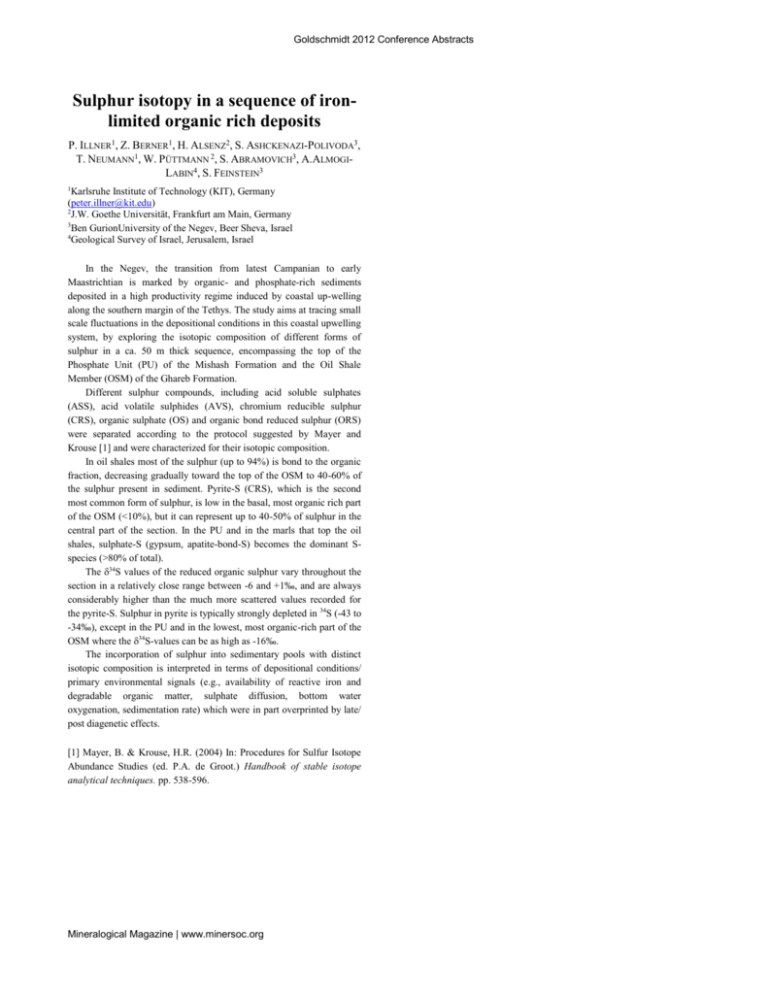
Goldschmidt 2012 Conference Abstracts Sulphur isotopy in a sequence of ironlimited organic rich deposits P. ILLNER1, Z. BERNER1, H. ALSENZ2, S. ASHCKENAZI-POLIVODA3, T. NEUMANN1, W. PÜTTMANN 2, S. ABRAMOVICH3, A.ALMOGILABIN4, S. FEINSTEIN3 1 Karlsruhe Institute of Technology (KIT), Germany (peter.illner@kit.edu) 2 J.W. Goethe Universität, Frankfurt am Main, Germany 3 Ben GurionUniversity of the Negev, Beer Sheva, Israel 4 Geological Survey of Israel, Jerusalem, Israel In the Negev, the transition from latest Campanian to early Maastrichtian is marked by organic- and phosphate-rich sediments deposited in a high productivity regime induced by coastal up-welling along the southern margin of the Tethys. The study aims at tracing small scale fluctuations in the depositional conditions in this coastal upwelling system, by exploring the isotopic composition of different forms of sulphur in a ca. 50 m thick sequence, encompassing the top of the Phosphate Unit (PU) of the Mishash Formation and the Oil Shale Member (OSM) of the Ghareb Formation. Different sulphur compounds, including acid soluble sulphates (ASS), acid volatile sulphides (AVS), chromium reducible sulphur (CRS), organic sulphate (OS) and organic bond reduced sulphur (ORS) were separated according to the protocol suggested by Mayer and Krouse [1] and were characterized for their isotopic composition. In oil shales most of the sulphur (up to 94%) is bond to the organic fraction, decreasing gradually toward the top of the OSM to 40-60% of the sulphur present in sediment. Pyrite-S (CRS), which is the second most common form of sulphur, is low in the basal, most organic rich part of the OSM (<10%), but it can represent up to 40-50% of sulphur in the central part of the section. In the PU and in the marls that top the oil shales, sulphate-S (gypsum, apatite-bond-S) becomes the dominant Sspecies (>80% of total). The 34S values of the reduced organic sulphur vary throughout the section in a relatively close range between -6 and +1‰, and are always considerably higher than the much more scattered values recorded for the pyrite-S. Sulphur in pyrite is typically strongly depleted in 34S (-43 to -34‰), except in the PU and in the lowest, most organic-rich part of the OSM where the 34S-values can be as high as -16‰. The incorporation of sulphur into sedimentary pools with distinct isotopic composition is interpreted in terms of depositional conditions/ primary environmental signals (e.g., availability of reactive iron and degradable organic matter, sulphate diffusion, bottom water oxygenation, sedimentation rate) which were in part overprinted by late/ post diagenetic effects. [1] Mayer, B. & Krouse, H.R. (2004) In: Procedures for Sulfur Isotope Abundance Studies (ed. P.A. de Groot.) Handbook of stable isotope analytical techniques. pp. 538-596. Mineralogical Magazine | www.minersoc.org
